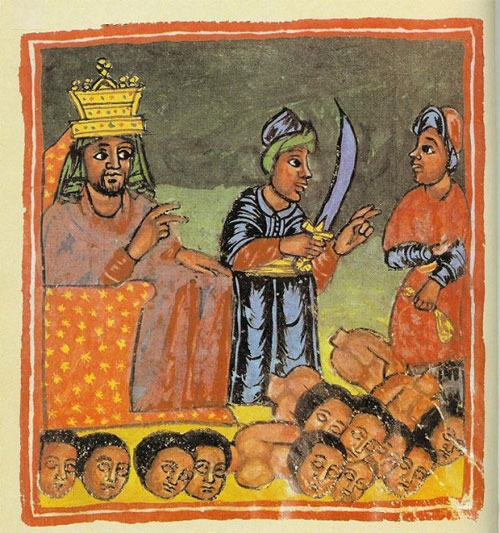The transformations of punishment behave from the beginning to the present
Back in history to better understand one of the most brutal forms of death ever known - beheaded.
>>>How do people survive after being beheaded?
In the legal system of many countries around the world, death penalty is the highest form of punishment for particularly serious crimes. The most common forms of capital punishment include death with guns and poison injection.
However, many countries in the world have ever applied the beheading form in the execution of criminals. According to the flow of history, this penalty was almost eliminated due to the brutal and controversial nature.

Decapitation (beheading) is a form of death where the offender's head is cut off from the body by using axes, swords or guillotine. In the past, the beheading of criminals sometimes took place in public places where there were many people passing by. This penalty is also called 'beheading them'.

For Chinese and Eastern peoples, beheading is one of the most terrible forms of death. According to Confucian conception, the fact that the body is not intact when it dies will offend the father and mother of the person who must bear the sentence.

Meanwhile in the Middle Ages, beheading was considered the most noble form of execution, reserved only for nobles and knights. Lower-level prisoners in society will be executed in other forms such as hanging or being put on cremation.

The beheading by beheading has been widely popular in many different cultures. This picture depicts a medieval king in Ethiopia (East Africa) ordering the execution of several prisoners at the same time.

Here is a photo taken inside the house of the Borneo islanders, now in the territory of Malaysia and Indonesia in the early twentieth century. Indigenous people in Borneo used to have a headhunting routine and displayed them as spoils.

Death execution by beheading often happens very quickly and the offender will soon die. However, this depends on the sharpness of the blade and the level of the executioner. In some rare cases, executioners need more than one sword to completely cut off the offender's head.
Typical of such incidents is the execution of Queen Mary of Scotland in 1587. Being convicted of murdering Queen English Elizabeth I, she was put on the scaffold. The executioner had to use 3 blows to complete the sentence.

In order for the beheading to take place faster and to avoid unplanned "incidents", the French launched their guillotine. The blade hanging from the sky is dropped and quickly destroys the fate of the offender.

In 1789, the French Revolution exploded. Subsequent political upheavals in France led to many of the country's aristocrats, including King Louis XVI being brought to the guillotine.

One of the other famous victims of "guillotine" is Queen Marie Antoinette - a woman famous both in beauty and extravagance of luxury in the French court.
She was Louis XVI's wife and was arrested along with the royal family during the revolution. In 1793, she was beheaded in public at Concorde Square in Paris.

Guillotine guillotines also appear in many French colonial countries, including Vietnam. In the picture is a guillotine on display in the museum in Can Tho. Many revolutionary Vietnamese soldiers were beheaded by the French for fighting for national independence, typically Nguyen Thai Hoc - leader of the Yen Bai uprising in 1930.

View of Deera Square, where the beheading of Saudi Arabia takes place
By the end of the twentieth century, the form of decapitated death was gradually replaced by other methods. However, to date, Saudi Arabia, a Middle Eastern country with many harsh punishments, is the only country still maintaining this form of death. Prisoners were beheaded at Deera Square in Riyadh, where there were many witnesses.

In early 2014, an Indonesian female maid (pictured above) had just escaped the death sentence in the form of beheading in Saudi Arabia. The owner was constantly beaten, the woman protested and caused the landlord's death. The Indonesian and international public have entered a strong fight to save the woman from the brutal punishment.
- Cruel punishments of ancient Egyptians
- Assuring a punishment for adultery women in ancient times
- 'Fine laughs' - Scary and painful torture in ancient times
- The plastic makes the female mouse
- Video: UFO transformations appear in the English sky
- How do people survive after being beheaded?
- The transformations of the Earth through satellite images
- Diamonds 'transformations' are extremely toxic
- Japanese Robot performs in Vietnam
- Journey 'conquer the world' of dish No. 1 in the hearts of students
- General news best week 01/05/2017
- Hot sunshine, many children get sick
 'Fine laughs' - Scary and painful torture in ancient times
'Fine laughs' - Scary and painful torture in ancient times The sequence of numbers 142857 of the Egyptian pyramids is known as the strangest number in the world - Why?
The sequence of numbers 142857 of the Egyptian pyramids is known as the strangest number in the world - Why? History of the iron
History of the iron What is alum?
What is alum?